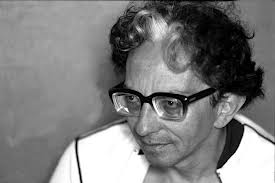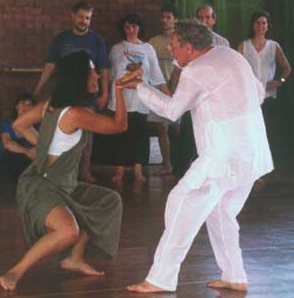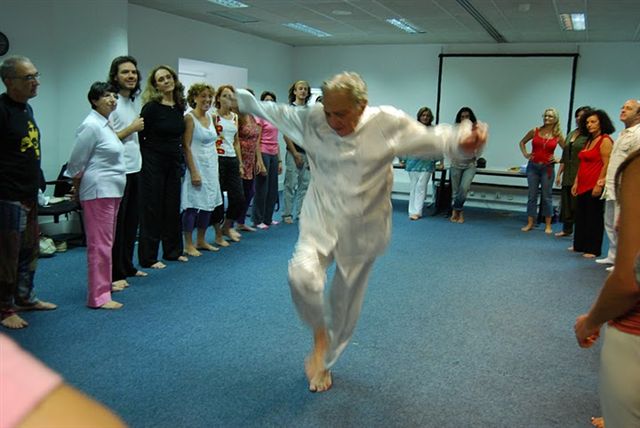Everything You Need to Know About Biodanza
What is Biodanza?
A dancing path to new ways of living and relating.
What we need to live harmoniously is intimacy, self-love, transcendence, fulfilling relationships and a nurturing environment. The objective of Biodanza is to improve quality of life through supporting these natural and fundamental needs.
The name Biodanza means “dance of life”, originating from "bios" which means "life" and "danza" in French which means "integrated movement full of meaning". Rolando Toro Araneda, who created the system, described it as a system of:
- affective integration - the ability to be in connection and relationship with the self, other people, life, and nature;
- organic renovation - reducing stress and supporting our bodies to self-regulate and repair; and
- relearning of our original life functions -living based on our original instincts, like resting or sleeping when we are tired;
- based on vivencias - an intense lived experience of the present;
- induced by dance, music and encounters - experiences of connection - with other people in a group.”
Many people who have experienced Biodanza will first think of it as dance, but it is much more than that. It is a carefully-created system for awakening and renewing our innate human potential and supporting authentic connection with other people.
Biodanza works with 5 “lines” of human potential:
- Vitality: having a strong life force and motivation to live
- Sensuality: experiencing the freedom to find pleasure in living
- Creativity: ability to be responsive to challenge and to live life as a work of art
- Affectivity: living our relationships in connection to our feeling world
- Transcendence: experiencing ourselves as deeply connected to life
Biodanza awakens our vital energy for healthy, pleasurable living through a fusion of music, movement, dance and encounters with other people. Participants often leave Biodanza sessions feeling more energetic, content, relaxed and connected with themselves, other people and life.
Research shows that this sense of wellbeing comes from the major biochemical and neurological rebalancing that happens in the body during a session.
Biodanza is always offered in a group setting, as it is not an individual process. Together as a group, in pairs, and as individuals within the group, participants explore movement, rhythm, touch, emotion and self-expression, unfolding into an experience of vivencia – which means to be vividly alive in the present moment.
For some, Biodanza is about fun, guided expressive movement that brings a sense of renewal and optimism. For others Biodanza is a journey into a process of profound growth.
Whatever the case is for you, it only takes a single session of Biodanza to feel energised, restored and in a positive space. And, with regular practice you can expect to get closer to what you really want for your life.
When Rolando (the creator of Biodanza) was asked if it was a physical therapy, a system of growth, or a creative exercise?” he replied …
"It is more than all of these! It addresses the totality of the human being. It doesn’t separate people into fragments. Biodanza has many therapeutic effects, but these are not the goal.
The word Biodanza has two parts, bios (life) and danza (meaningful movement). So Biodanza is the possibility of dancing our own lives, of bringing music, rhythm, harmony and emotion into our communities and personal lives.
Biodanza is different from conventional dance because it’s a guided discipline that stimulates specific aspects of human potential, such as creativity, affection, vitality, and so forth, through different sets of movement to music exercises.”
How does it work?
Biodanza is designed to be experienced over time, in weekly classes (1.5-2 hours) and occasional longer workshops. It includes experiences and time for reflection, enabling participants to integrate “what you dance” into “how you live”.
Each session is carefully constructed by a trained and internationally-accredited facilitator, offering a series of approved exercises combined with music selected from a worldwide catalogue. Each exercise is an invitation to explore and express your potential in a fun, inviting and engaging way with music, movement, dance and interactions with the group. Sessions are progressive and are structured to gradually develop the expressive capacity of participants.
Typically a person would start Biodanza by trying out a taster class or joining an Initiation Course. After a period of time they might then move on to other session types.
Read MoreWeekly Initiation Course. Most people start doing an Initiation Course (sometimes called Orientation Course) where you might get in touch with feelings of joy and vitality, and start to get clearer about what is good for you and feel more free to express yourself. The Initiation Course is an introduction to Biodanza, for people who have little or no experience. It lays down some important foundations for the process and typically runs about a year.
Weekly Deepening Course. Many continue to the Deepening Course (sometimes called Integration Course) where you continue to dissolve old patterns and birth new aspects of yourself. The aim is to increase the intensity of vivencia and the expression of participants’ potential in the 5 lines. The Deepening Course is open - by invitation of the facilitator - to people that have completed an initiation course, and typically runs for more than a year.
Workshops. Workshops are one-off events, often on a particular theme or intention. Workshops are generally open to those with some Biodanza experience, but some may be suitable for beginners.
Read More“Biodanza is about learning to dance with life and rediscovering the pleasure of living.” Rolando Toro Araneda, Biodanza Founder.



Origins of Biodanza
Biodanza began in the mind of Rolando Toro Araneda, a Chilean teacher and psychologist as well as poet and painter. The system was born from his desire to live in a more peaceful and compassionate world.
Between 1968 and 1973 he began experimenting with the initial forms of Biodanza with patients at the Psychiatric Hospital of Santiago and the Institute of Aesthetics of the Catholic University of Chile.
In the words of Rolando himself:
"It was through the profound darkness that I witnessed during the Second World War. Six million Jewish people were killed – I felt we were living in a civilization of death. At the time, I was a professor of medicine at the Centre of Medical Anthropology in Chile, looking for educational ways by which the human race could be helped to move forward. But I was also very aware that education was actually part of the problem and that schools and universities were in league with our individualistic, ego-based society. The film "The Wall", with the Pink Floyd song "Another Brick in the Wall", portrays this so well.
For a while I believed this madness in civilization could be biological. I tried to find out if there was some trigger in the human mechanism which was the cause. I also started to work with mental patients in psychiatric hospitals in Chile, using a variety of tools such as painting, theatre, and voice work.
One day I threw a party for the patients in the hospital. I witnessed a huge change in the patients. They dressed up and behaved in a very different way. When they danced, I saw their behavior change even further. Something shifted at an unconscious level. I decided to take the experiment further. I introduced regular dances with music and invited the doctors and nurses as well. I noticed extraordinary changes. Eventually the medical students got interested and Biodanza as a method began to emerge."
From a 1996 interview.
Over time Rolando refined and applied Biodanza in his work with mastectomy patients, people with Alzheimer’s and Parkinson’s Disease, and in psychiatric settings, as well as incorporating anthropology, psychology and biology and much more.
In 1979, while living in Brazil, Rolando created the Institute of Biodanza and laid the foundations for the expansion of the system throughout Latin America. This eventually led to his nomination for a Nobel Peace Prize in 2001.
The system continues to grow through research and the contributions of over 4000 facilitators of Biodanza across the globe. Thousands of people now enjoy Biodanza every week. It is offered in schools, companies, clinics, mental health institutions, social projects and even as a course in some universities.
Find out more about the life of Rolando Toro Araneda.
Research in Biodanza
Along with plenty of anecdotal evidence, there is increasing scientific evidence indicating that dance therapies can improve quality of life, sense of wellbeing and mood, and positively affect body image, while maximising the effects of more typical mental health interventions.
Biodanza is supported by a growing body of research showing that participants experience real biological and psychological changes with regular practice, including:
- reductions in stress, impatience, depression and anxiety;
- improvements in self-esteem and emotional intelligence;
- increased ability to express emotion;
- changes in biochemical and immunological response (measured through factors such as changes in heart rate, skin response, and cortisol levels).
Some of the effects of Biodanza have been found to continue longer (after regular sessions), compared to other systems or therapies like yoga.
Major biochemical and neurological re-balancing takes place during sessions and this supports positive pathways and patterns for living to emerge in us, take root, and grow. Informed by psychology, neurology, psycho-biology and immunology, regular Biodanza facilitates healing on many levels.
The repeated positive imprinting of affection, love and connection during classes leads to states of joy, happiness and gratitude for being alive.
The music and exercises evoke deep responses in the autonomic nervous system (ANS) and the immune system, helping to restore hormonal balance and healing on a cellular level. As the parasympathetic nervous system (PNS) is activated, tension in the muscles dissolves, the breath deepens, stress hormones reduce to normal levels, and ultimately the immune system is strengthened. Through this profound state of relaxation, participants are left with a feeling of wellbeing and peace.
Find out more about Biodanza research on our blog.
